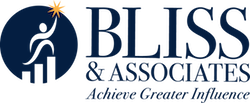
As we approach the new year, many leaders are thinking intently about driving substantive and meaningful progress into the performance of their organization and teams. The cornerstone of these efforts is typically a few training experiences they hope will breathe life into the challenges they foresee for the upcoming year.
Successful leaders don’t merely look for existing training programs; rather they define the content of these programs into change initiatives specific to the challenges they know about. Here are 4 thoughts to ensure your thinking is intentionally targeted for the coming year.
1. Create a Targeted Theme
Create a theme and title that both illustrates and encapsulates the overall goals for the effort. The theme will help everyone stay focused on targeted outcomes throughout the year and help build a common language that will connect your team both horizontally and vertically within the ecosystem of the company.
Remember to be intentional in how you structure your theme. Resist a tendency to summarize all of your organizational goals in a single theme. Pick a key area of focus and keep all of the year’s training initiatives relevant and targeted to the theme.
2. Define Success and Measure it
The next step is to clarify what will be considered a successful initiative at both the individual and team levels. The hard and soft skills want to improve certainly need to be defined; you must also define what constitutes an actual improvement. Without these definitions and metrics it is impossible to determine if any level of success has been achieved.
At the end of each quarter, make an honest assessment of the outcome and develop a plan to apply lessons learned to the following quarter. Celebrate the wins and commit to continue the momentum.
3. Plan Around People First, Not Budgets
Just as the theme should be built around the people want to grow, map out the development goals at both the individual and team level. This plan will include the skill gaps to close and the personal development that you want to foster. This doesn’t mean recklessly throwing money at a problem. There are many ways to develop the skills and behaviors of a team to fit a variety of budgets. The right path is to first determine the needs. Presenting a solid plan around desired outcomes and acknowledged gaps will have a much easier time getting funded
4. Achieve Buy-in for Successful Execution
This last point helps to ensure the positive outcome of the previous three. If you followed step 1 through 3, this one comes naturally. Any plan is only as good as its execution. The reasons for the new development plan must be communicated clearly, particularly the gains you hope to achieve. And it must be communicated across every level of your organization, not just once but reinforced many times. This enables your team to know you are serious and committed.
Begin your explanation with the skills and needs you are looking to fill, then work to achieve buy-in on the metrics used to measure progress so success is easily recognized when it happens. Be open for and encourage feedback from your team. Once you have wide-spread agreement in these areas, then the deployment of the program, and possibly the approval of the elusive budget for your 2018 effort, becomes much easier.
As you working on your strategy for 2018 call me and I can show you how to put all of these tips into practice to produce an actionable development and growth plan that gets results.
Best Regards,
Bill
PS – The ideas shared above were originally created by a colleague at the John Maxwell Company.

